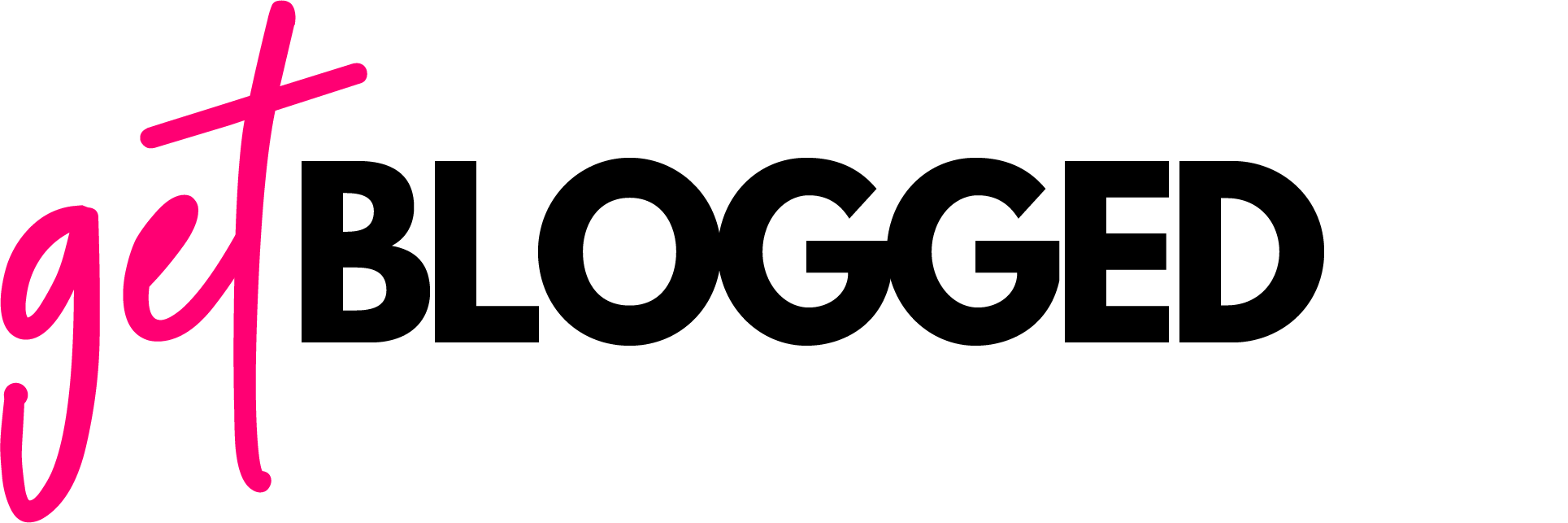Do you dream of securing more sponsored blogging work, collaborating with the best brands, and increasing your income all at the same time?
If so, you’ll already know that pitching needs to be a regular part of your blogger schedule.
Reaching out to brands and businesses and showing them exactly what you can offer and why they can’t afford to miss out on working with you is a key part of the process.
Sure, some sponsored content opportunities might just organically come your way, but there’s no reason why you shouldn’t be proactively seeking them out yourself.
Pitching can be a bit of a minefield though, and it can feel scary and overwhelming to put yourself out there.
You might struggle with exactly what to say, or it could be one of those things that you promise you’ll start doing more of one day soon, but never quite manage to get round to it.
Here at Get Blogged, we receive hundreds of pitches each and every month, and we assign hundreds of jobs to bloggers. Here are some common mistakes that we come across…
1. Communicating as if a brand would be doing you a favour by working with you
Have you ever found yourself telling a brand that you’d be ‘grateful’ or ‘appreciative’ if they decided to work with you?
Language like this may feel polite and professional, but actually, it could be seriously damaging your chances of success.
At the end of the day, brands don’t select bloggers for collaborations because they want to support the blogger community, or because they’re just being nice. It’s a business arrangement, and a key part of their decision making process will be based around the tangible value you can offer. As such, it’s vital that your pitches make this clear.
Go back through your recent pitches with this in mind, and consider whether you need to be using more confident and persuasive language.
If you know this is an area that you need to work on, check out our guide to increasing your confidence as a blogger.
Of course, there’s a balance to be struck here. There’s a big difference between having confidence in your work and your abilities, and just being a bit of a diva. At the other end of the spectrum, making bold and unfounded claims about your work or your reach is just as damaging in the longer term, and definitely won’t lead to successful collaborations.
2. Not including your specific content ideas
Content is quite obviously an extremely important part of the deal, so be specific and share 2-3 solid ideas that you have.
It’s one thing to state that you can write about fashion, and it’s another to let brands know that you can create a comprehensive guide to styling their white t-shirts so their customers can create multiple different looks for every occasion.
Demonstrating to brands that you really understand what they have to offer, and that you can showcase it in a creative and compelling way is going to give you a real edge during the pitching process.
3. Trying to convince brands that don’t want to be convinced
Influencer marketing continues to grow exponentially. Influencer Marketing Hub found in their 2020 Benchmark Report that the industry is set to grow to a whopping $9.7billion this year, and there’s been a 300% increase in the use of micro-influencers by large firms since 2016.
It’s crystal clear that more and more businesses are having their eyes opened to the fact that working with influencers and bloggers can have a serious and meaningful return on investment.
But not every brand that you approach will be convinced of your value, and trying to prove it to them can be exhausting.
Though there are content creators out there that have success with approaching business owners and convincing them from scratch that influencer marketing should be part of their strategy, it’s definitely not the path of least resistance.
Imagine for a second that a salesperson is tasked with selling more summer holidays. Are they more likely to hit their goal by approaching someone who hasn’t even considered travelling this year, or someone who already knows that they want to enjoy a break, have started looking at the options, and just want to pin down the more specific details?
Of course, it’s the latter.
This doesn’t mean that you need to compromise when it comes to the kind of content you want to create, or the niche that you want to serve, but it does mean that you might want to reconsider how you approach the pitching process.
At Get Blogged, our clients already know that they want to work with bloggers, and they know exactly why it’s an important part of their marketing strategy.
This is just one of the reasons why so many content creators love working with us, and secure so many successful collaborations.
4. Overlooking the importance of data and key metrics
Backing up your pitches with some key statistics can give them extra weight and make them all the more powerful.
Here are a few examples of how you can weave these in effectively…
“I recently published [link to your RELEVANT blog post], which was shared on social media ABC times and received XYZ visitors within the first 7 days of publication”
“I can share this content with my highly engaged email list of ABC subscribers. My average open rates are XYZ%”
“My blog receives ABC monthly visitors, with XYZ% of readers returning month on month to seek out and engage with my new content”
This doesn’t mean that you need to have hundreds of thousands of monthly visitors to shout about, or tens of thousands of followers across every social media channel.
Many brands are well aware of the impact that micro-influencers can have, and they won’t always be looking for the loftiest numbers.
But showing that you understand the data behind your work and have a good level of commercial awareness can make your pitches all the more persuasive.
5. Taking it personally when a brand doesn’t accept your pitch
We know that it’s frustrating and disappointing when your pitch isn’t accepted. But if you take it to heart every time it happens, you’re putting yourself on a fast track to burn out and despair.
The reality of the situation is that different brands look for different things for different campaigns.
Your blog will be the perfect fit for one opportunity, but not quite right for another.
There are often multiple metrics that are considered in the decision making process, and though it’s important to learn and tweak your approach as you go, even the best blogs in their niches won’t necessarily always get the work that they pitch for.
6. Pitching once or twice then giving up
This one links in nicely to what we’ve just discussed above. If you’ve had a few pitches knocked back, then you might fall into the mindset of questioning what the point is anyway. Y
ou tell yourself that this isn’t going to work out, that putting any more effort in a waste of time because you’re probably not going to get anywhere.
What’s important to remember though is that to a certain extent, it’s always going to be a bit of a numbers game. Of course there are many other factors that play a part, but all other things being equal, if you pitch for one job per month, you’re going to have a much smaller success rate than if you pitched for ten jobs per month.
Every content creator will have different priorities and different amounts of time available, but if you’re serious about securing more collaborations, consider how you can incorporate pitching into your regular schedule.
If you pitched for a job that you really wanted but it didn’t work out, it doesn’t always mean ‘no’. It might just mean ‘not now’. In a month or two, come back with a stronger pitch and try again.
7. Writing long, rambling pitches that take too long to digest
Brands have a lot of pitches to get through when they’re assigning jobs, so it makes sense to get right to the point with what you have to say.
Otherwise, you’re running the risk of having your most important points getting lost in all the noise.
Next time you write a pitch, go back through it and edit out absolutely everything that you don’t think really needs to be in there.
Getting into this habit will ensure that your work is as concise as possible, and does the best possible job of explaining why you’re a good fit.
Though it’s often a good idea to cover points such as why your blog is relevant to the opportunity, and supporting statistics from similar campaigns you’ve worked on, it’s probably not necessary to include every achievement you can think of.
Ultimately, you want to be making it as easy as possible for brands to know why you’re a good choice, and move forward to the next stage.
8. Copy and pasting the same pitch to hundreds of different brands
If you have the same generic pitch that you send to every business you can think of, from wallpaper companies to boutique clothing stores, then the recipient is likely to spot that from a mile off.
Brands want to see that you’ve done your research and you know what they’re all about. They want to hear your unique content ideas, and get a feel for how you’d engage your readers with their products or services.
As we’ve mentioned, regular and consistent pitching is key to securing the best collaborations, but don’t fall into the trap of going too far to the other extreme.
Do you recognise any of these pitching mistakes in your own work?
Pitching is an art as much as it is a science, and getting it right and securing the best collaborations isn’t always a box ticking activity.
It’s something that bloggers develop over time, and successes and failures are an inevitable part of the process.
Pinpointing where you can improve though is an important part of the process, and using these points we’ve discussed as food for thought could make a tangible difference to your success rates.
Are there any other mistakes that you know you might have made in the past? Leave a comment and let us know how you’ve developed your pitching strategy during your blogging career.
Want to save this post so you can come back to it later? Pin the image below on Pinterest.



 rated
rated







![6 ways to collaborate with bloggers this Thanksgiving [with case studies]](https://getblogged.net/wp-content/uploads/2022/10/pexels-rodion-kutsaiev-10060431-300x300.jpg)


![Blogger's guide to seasonal gift guides [+ 20 ideas to steal]](https://getblogged.net/wp-content/uploads/2022/09/pexels-ray-piedra-1502219-300x200.jpg)







